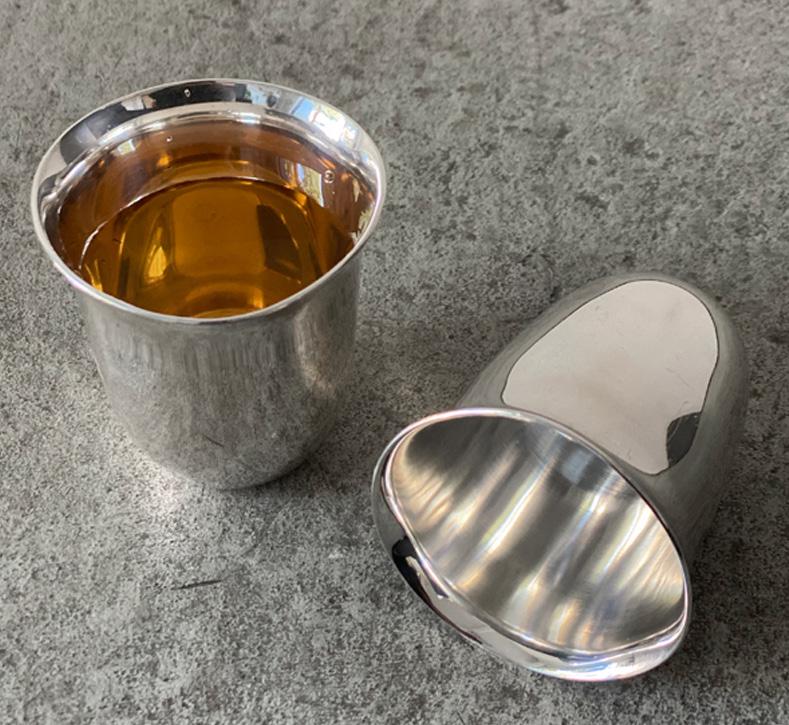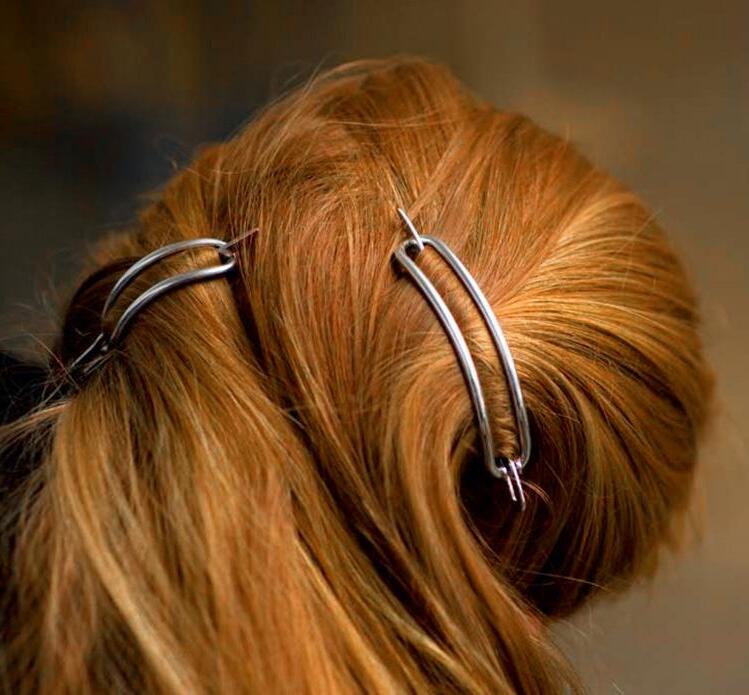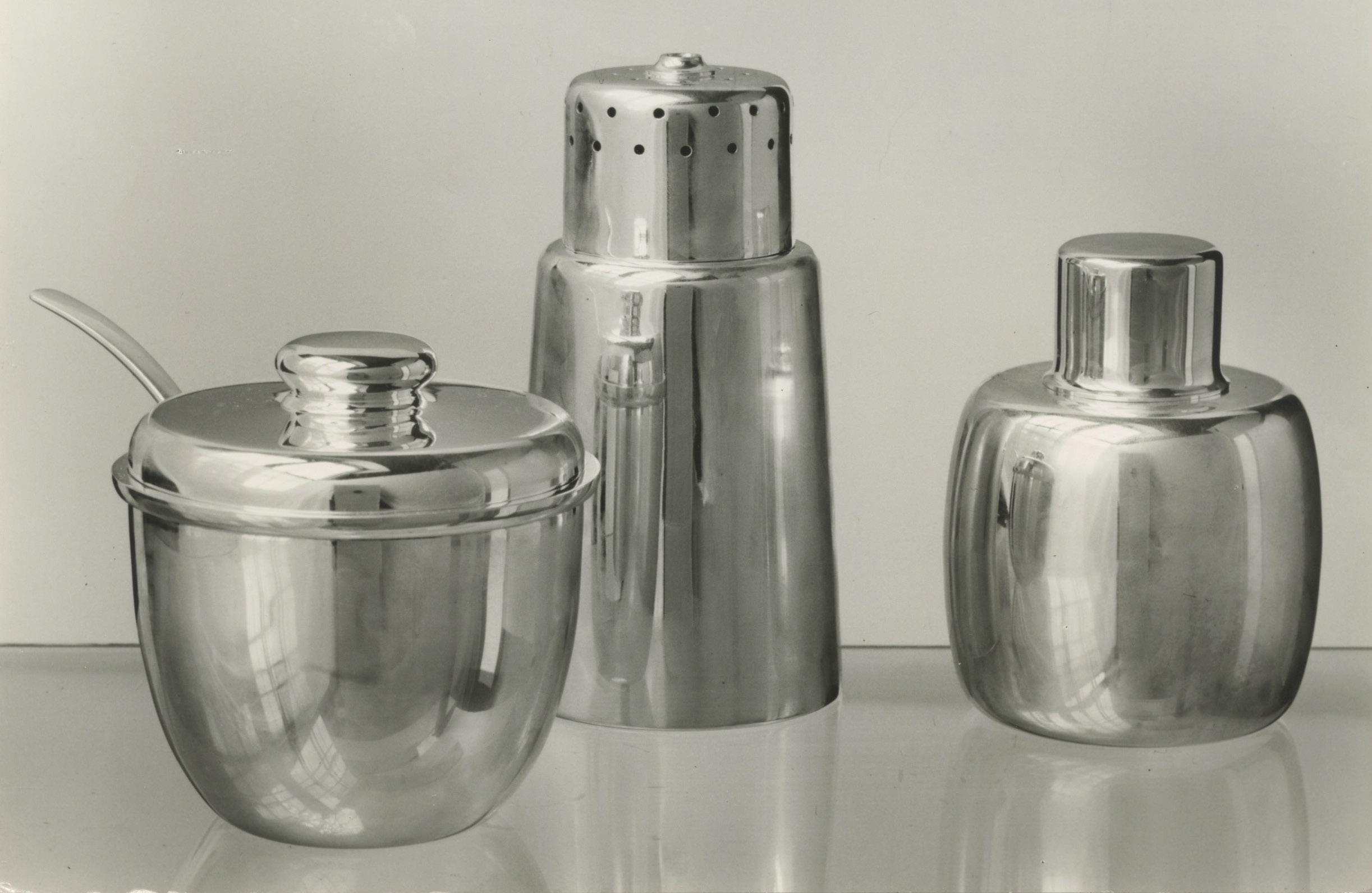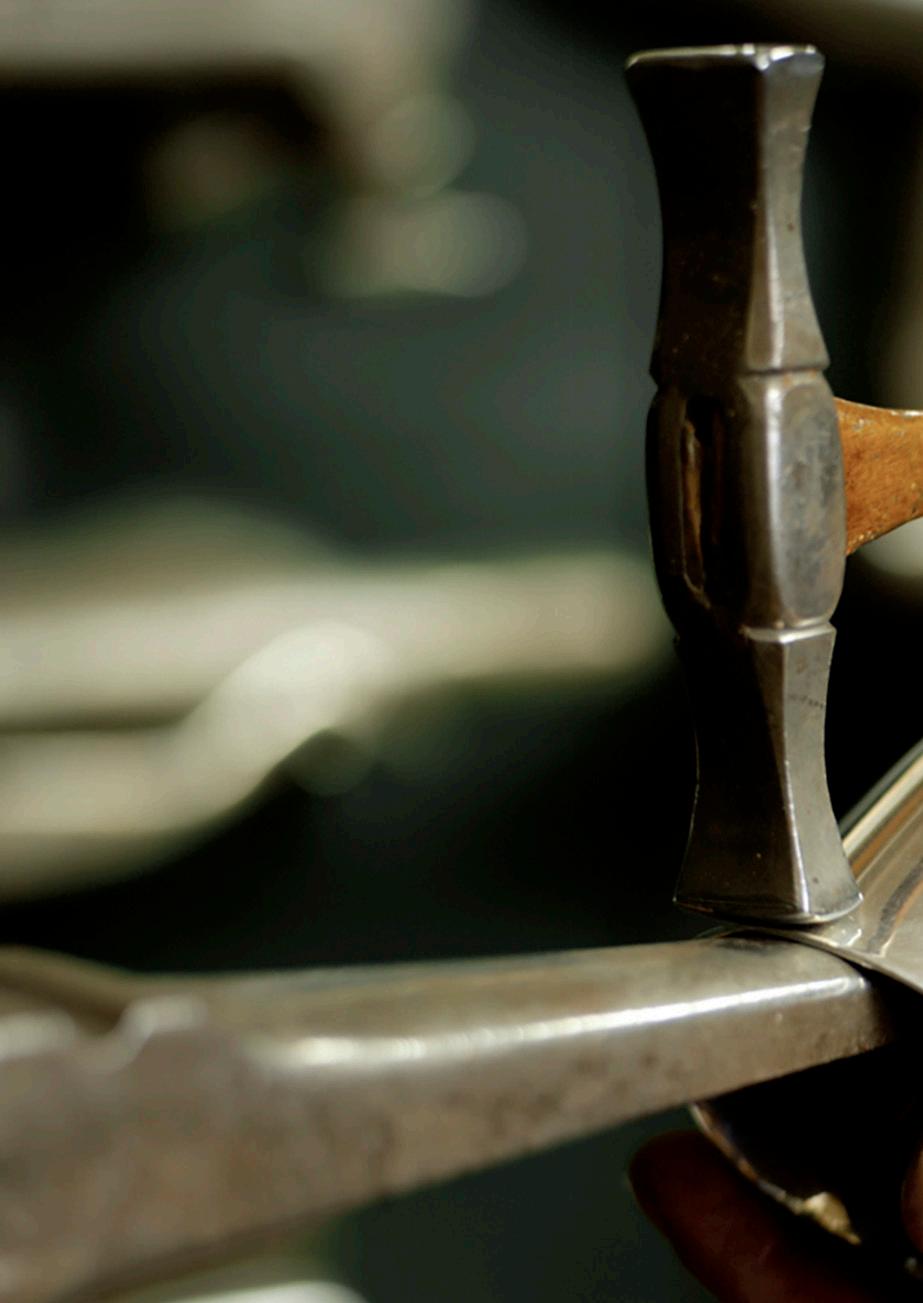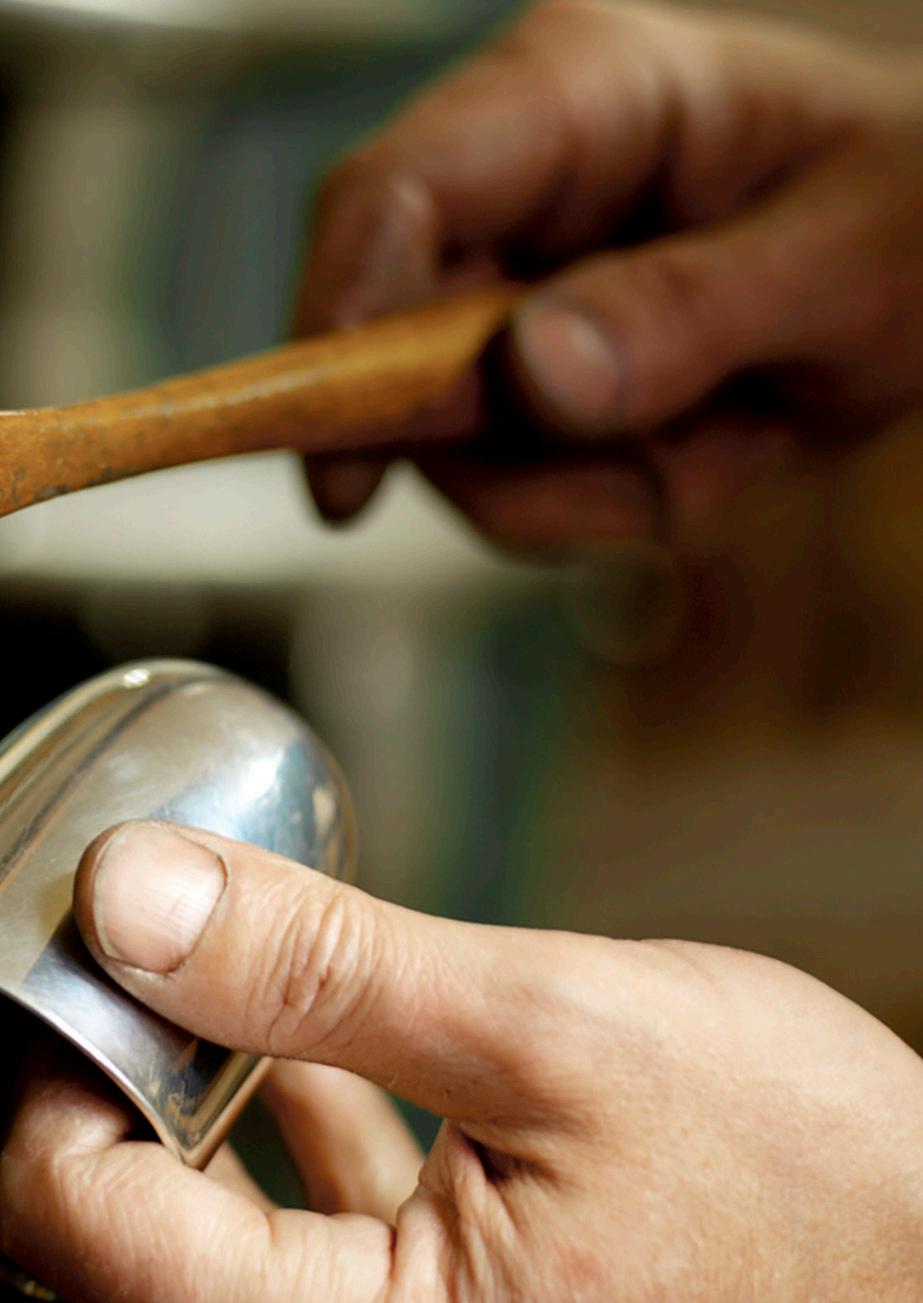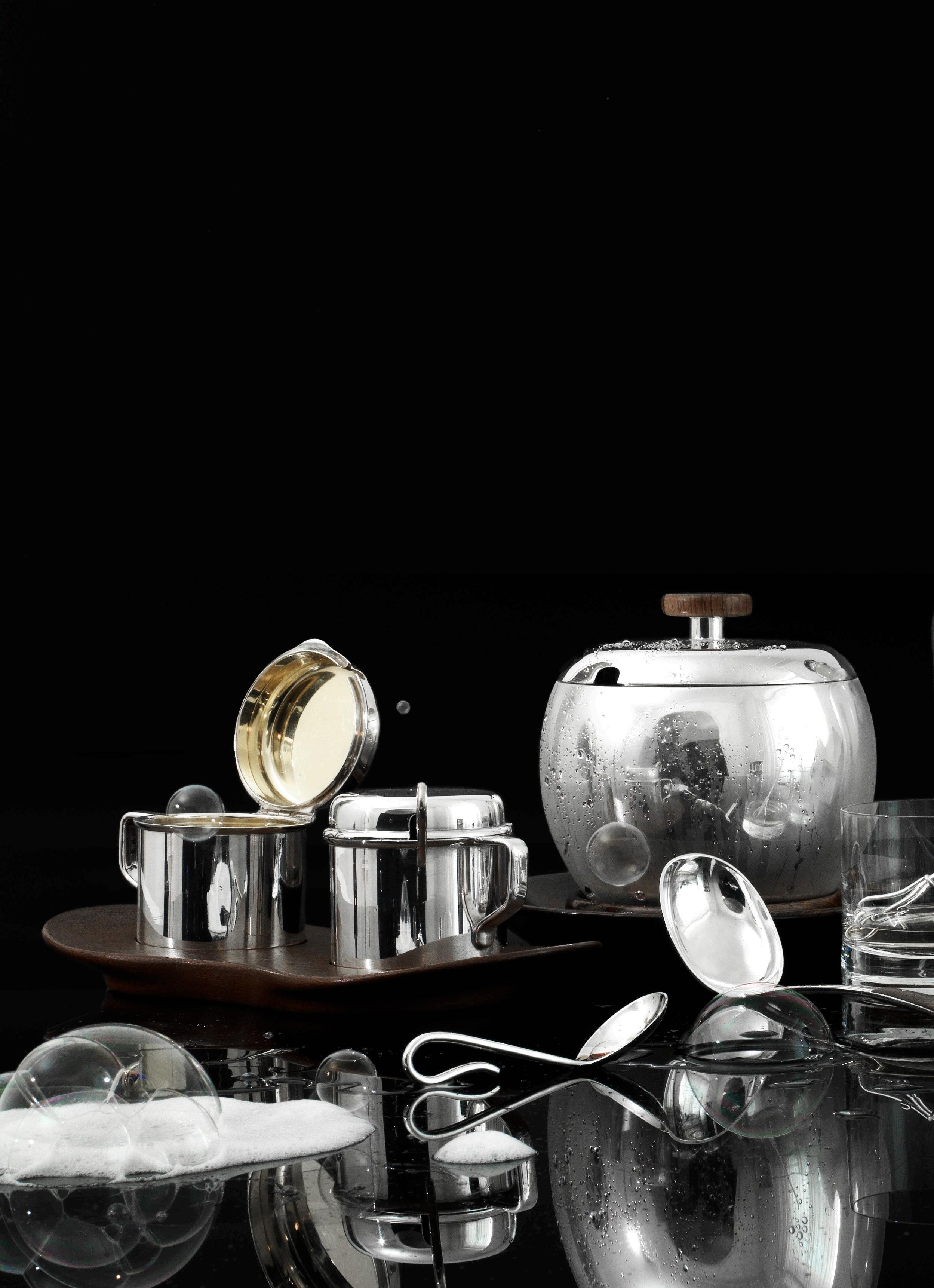
1 minute read
KAY BOJESEN SILVER
by Kay Bojesen
ALTHOUGH KAY BOJESEN FOUND GREAT JOY IN EXPERIMENTING WITH DIFFERENT MATERIALS,
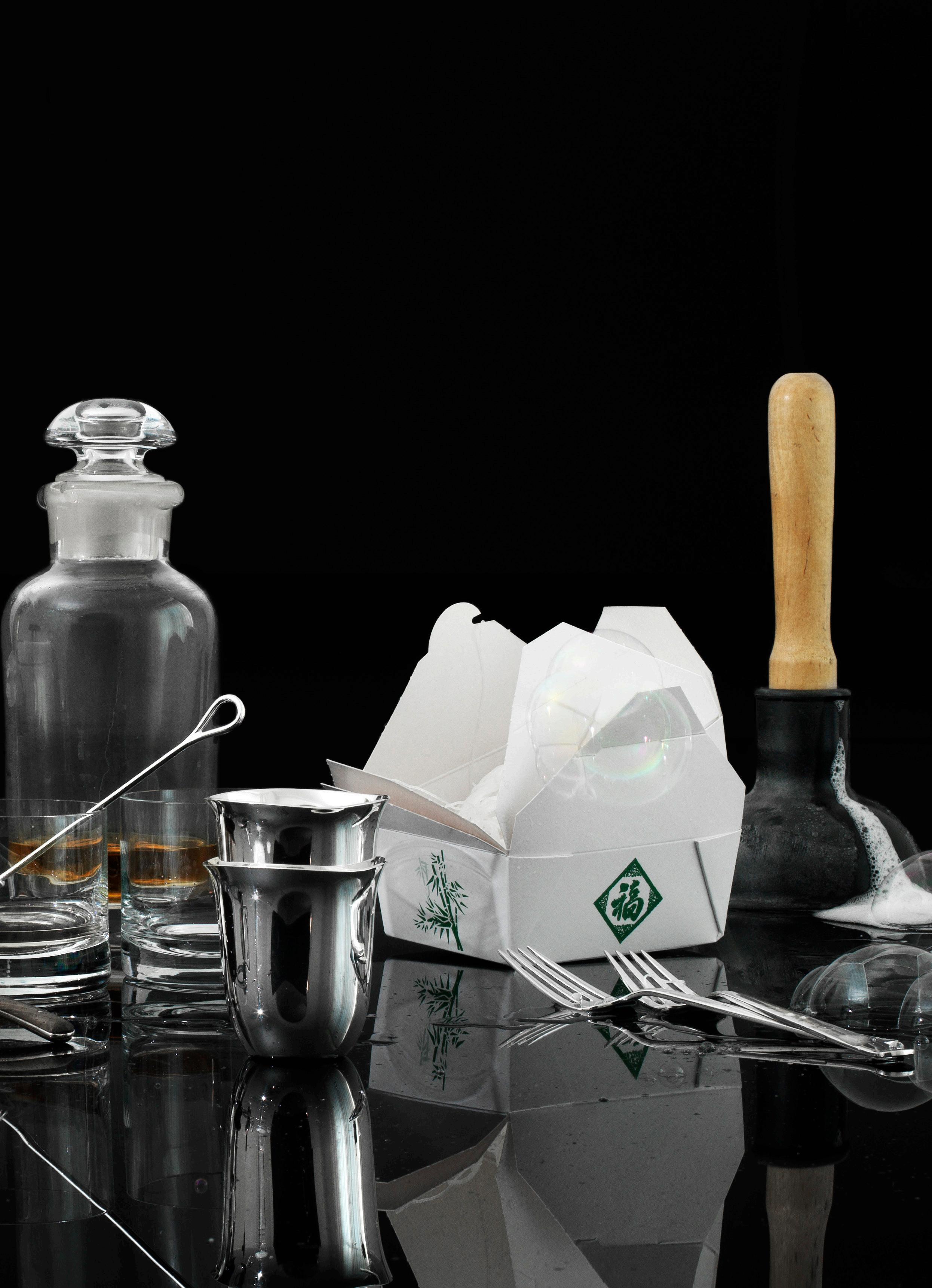
Advertisement
Kay Bojesen was a trained silversmith and spent the first many years of his career crafting silver. He was trained at Georg Jensen’s workshop in a backyard to Bredgade in Copenhagen, where he learned how to master Art Nouveau, curlicues and ornamentations to perfection. His early hammered silver crafts were thus characterised by heavy decoration, motives inspired by nature; flowers and insects, and semiprecious decorative stones.
Once Kay returned from travelling Europe and opened his own workshop in 1913, his eyes were opened to a different style of crafting silver. During the 1920s, Kay became a strong advocate for functionalism, arguing that Art Nouveau, ornamentations and decorations belonged to a bygone era. Instead, he admired the clean, simple and engineer-like expression of functionalism, believing that the alluring reflections of the silver was decoration enough in itself.
In the 1930s Kay Bojesen put his heart and mind into crafting functionalist silverware. He created coffee- and tea pots, trays, bowls, plates, cups, candleholders and jewellery, among other things. Kay eventually set out to create the perfect, functionalist cutlery, and in 1938 he presented what later became known as the iconic Grand Prix cutlery.
Kay Bojesen experimented with a lot of different materials throughout his career. However, silver was his all-time preferred material, as Kay believed it to be superior to all other materials. Today, Kay Bojesen’s silver craft stands as the flagship of his design and work.
